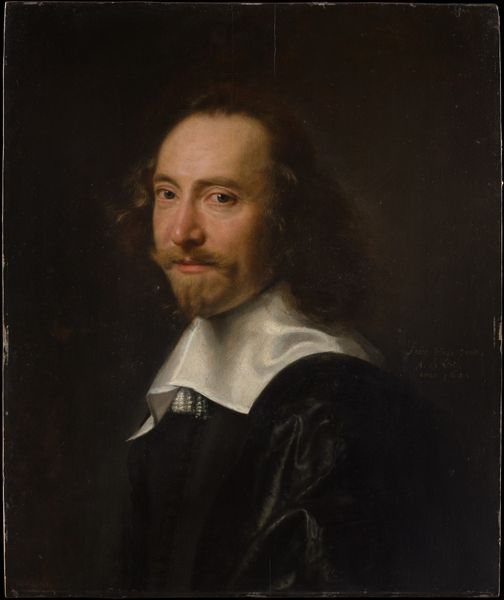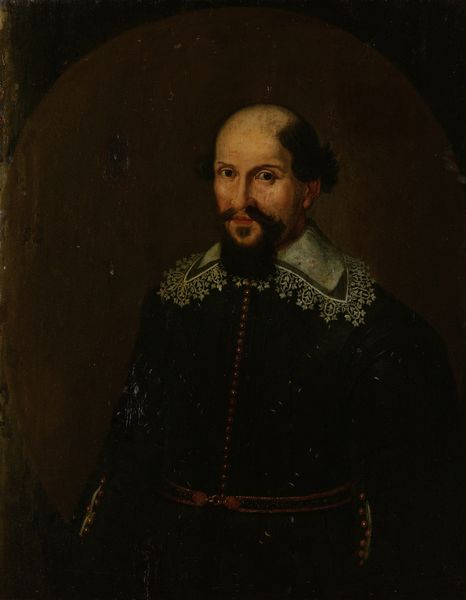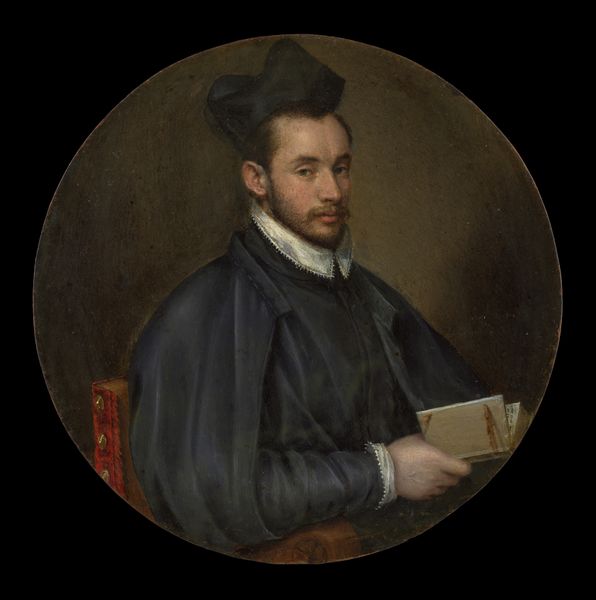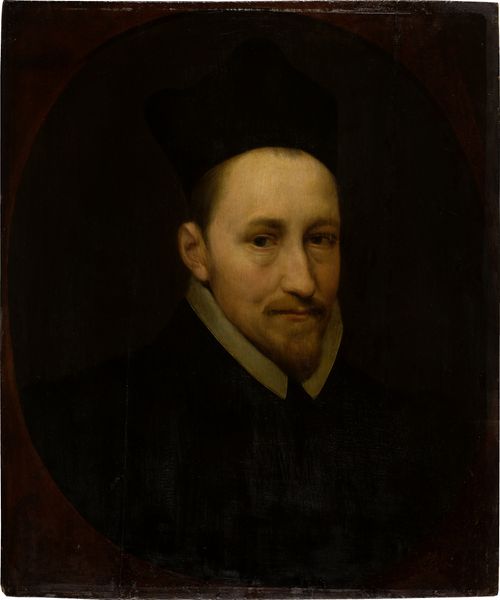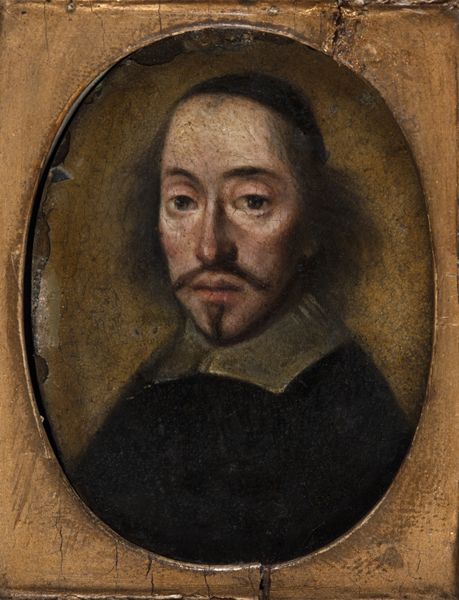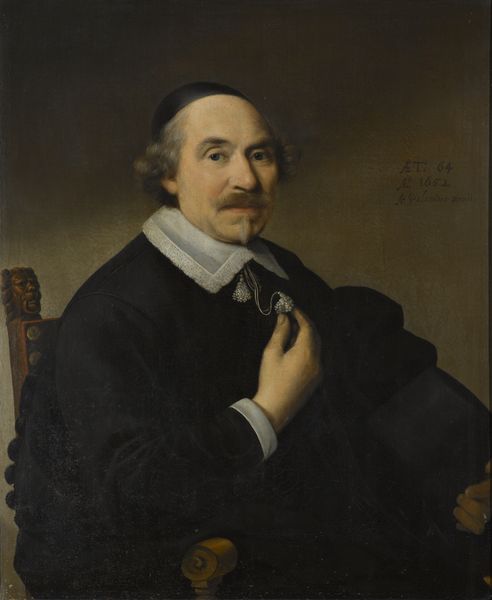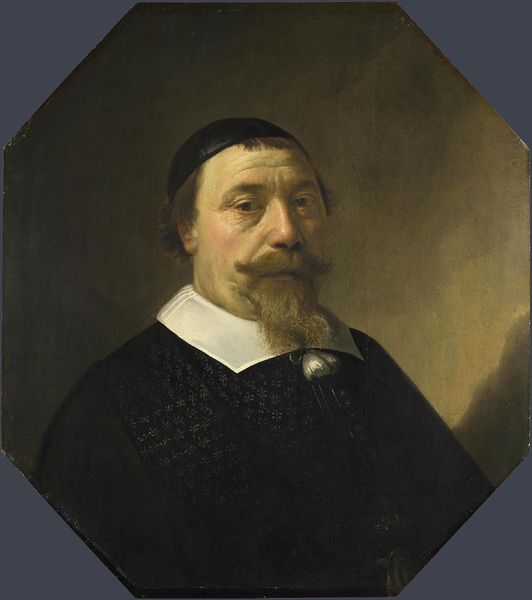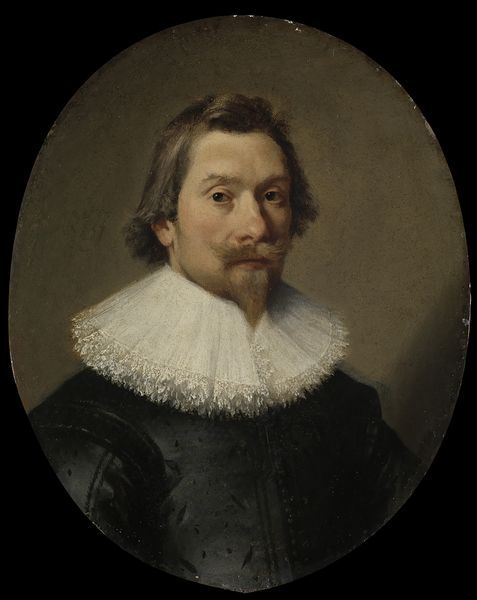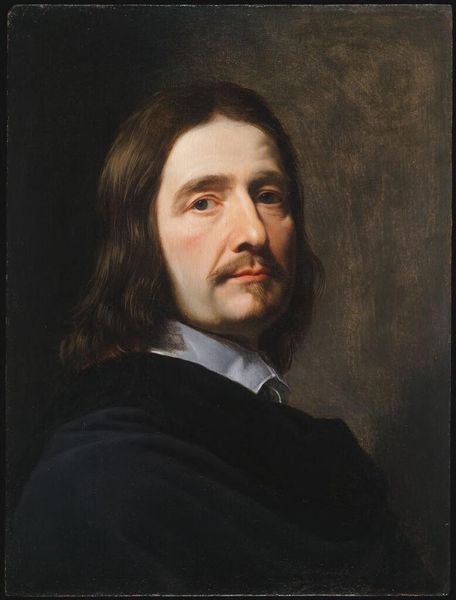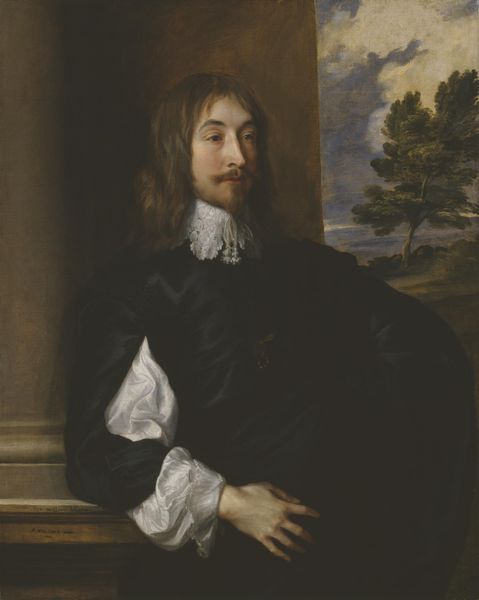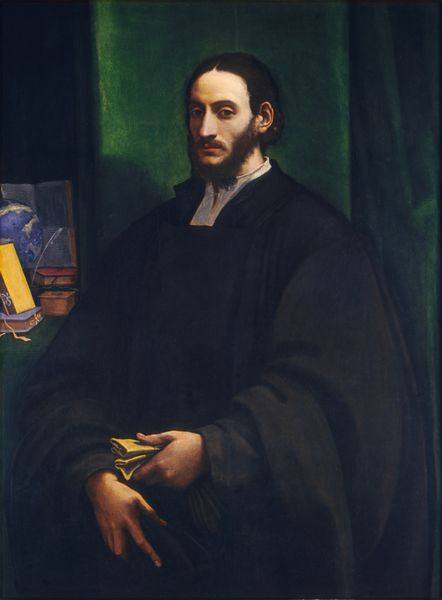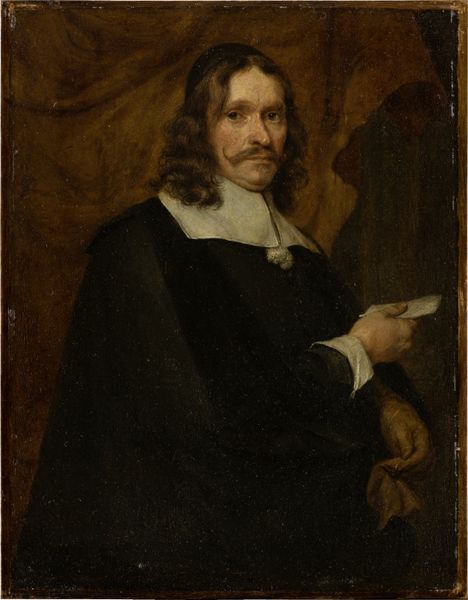
Portrait of a Man with a Watch 1657
0:00
0:00
oil-paint
#
portrait
#
baroque
#
low key portrait
#
portrait image
#
portrait
#
oil-paint
#
portrait subject
#
portrait reference
#
portrait head and shoulder
#
men
#
facial portrait
#
portrait art
#
fine art portrait
#
realism
#
celebrity portrait
Dimensions: 33 x 27 3/4 in. (83.8 x 70.5 cm)
Copyright: Public Domain
Editor: This is Cornelis Jonson van Ceulen the Younger’s "Portrait of a Man with a Watch," created in 1657. It's an oil painting currently housed at the Metropolitan Museum of Art. It strikes me as rather somber; the colors are muted, and there's a stillness about the man. What stands out to you when you look at this piece? Curator: Note how the artist has structured the composition. The figure is positioned slightly off-center, drawing our eye across the canvas, not merely holding us at a central point. Consider the interplay between light and shadow. The fall of light accentuates the texture of the fabric and the contours of the face. Is this deployment accidental, or is the composition carefully arranged to enhance the man’s serious demeanor? Editor: It feels deliberate, almost theatrical. The darkness contrasts so strongly with his white collar and cuffs. Is that typical of Baroque portraiture? Curator: Quite right. It is important to consider colour theory and the symbolic meaning associated with colour. Black was more than a pigment choice; its purpose was to suggest sobriety, status and authority, creating both an intriguing visual tension. The painting displays elements consistent with formal Baroque portraiture, especially in the staging, use of chiaroscuro and subject posture, and yet the composition departs, doesn’t it, through his rather asymmetrical placement. What do you notice of that? Editor: I see what you mean. His placement in the canvas seems off, the artist challenges conventions! It definitely holds the eye. Curator: Yes, exactly! What initially seems a conventional portrait then yields some compositional surprises. What seemed familiar soon becomes very interesting. Editor: This has totally reshaped how I view Baroque portraits! Curator: Precisely, by applying that initial lens, we find nuance and purposeful arrangements of the canvas that enhance and contribute to the meaning of the art.
Comments
No comments
Be the first to comment and join the conversation on the ultimate creative platform.
